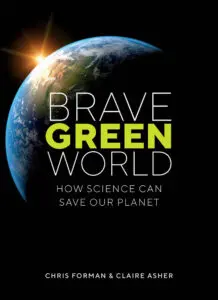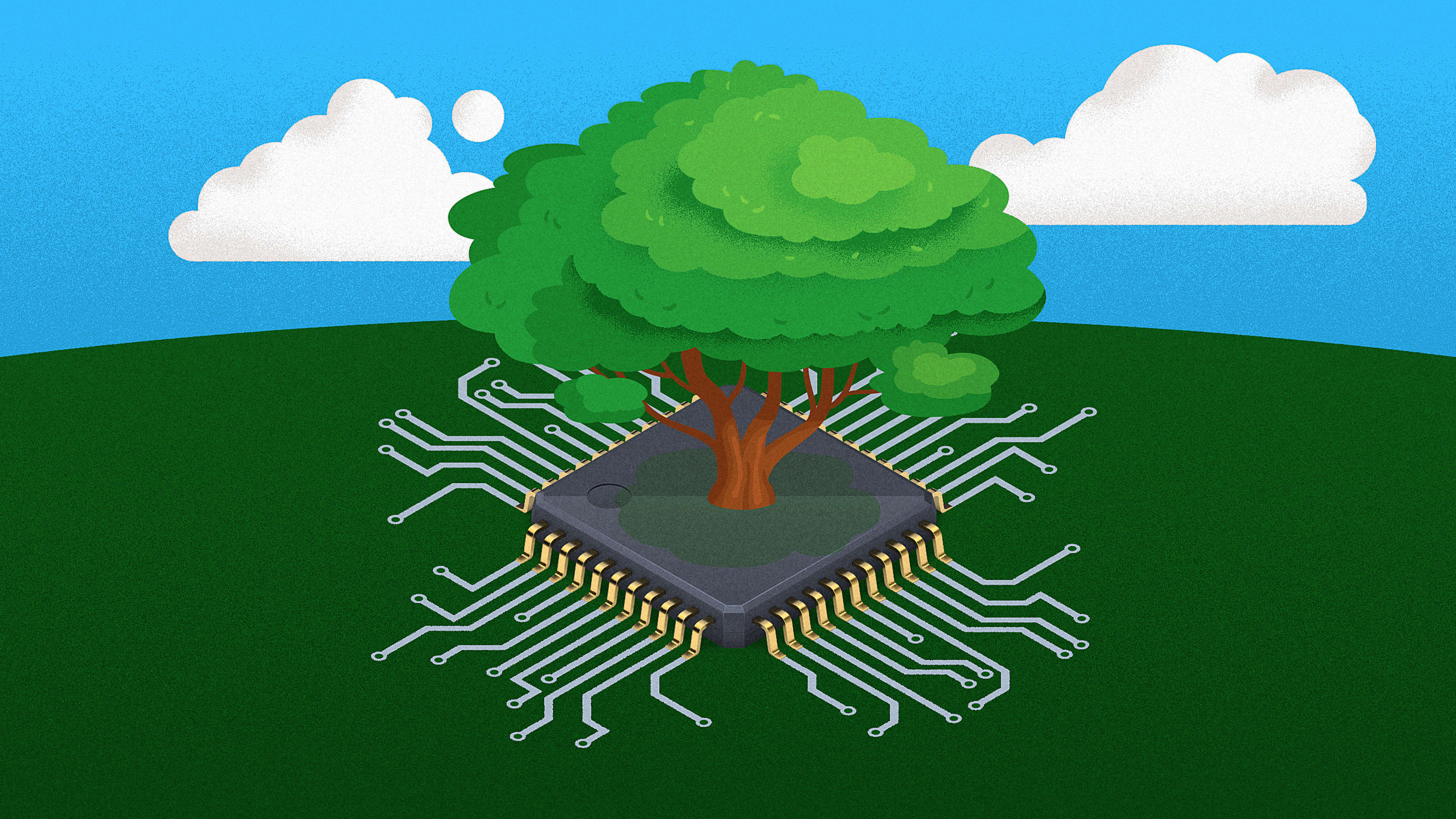The rings of a tree tell a story. A story about the life of the tree, and the environment in which it grew. But what is humanity’s story? Will it be a blackened layer of fossilized smartphones in the footnotes of geology? Or will it be a story like the Daintree rainforest in Australia—one of the oldest surviving forest ecosystems in the world whose current inhabitants boast a direct lineage thought to be over 100 million years old? To envision a 100-million-year-long story for humanity, we must imagine a world where every generation returns the materials they use to the soil, air, and oceans in a way that enables future generations to use that material too. A world without waste or pollution. The transition to such a system—called a circular economy—depends greatly on science.

Imagine if our future electronic devices could grow from the buildings around us like a tree bears fruit, and throwing away an old device was more like composting a discarded apple core. Smart materials and innovative molecular manufacturing inspired by natural organisms could trailblaze the way to a fairer, more sustainable society that boasts a hyper-efficient, innovation-driven circular economy. An economy equipped to address the multifaceted challenges of climate change, biodiversity loss, and inequality, while bringing countless benefits for all of humanity.
We have a vision of a future where 10 billion people can flourish on Earth indefinitely, without exhausting our planet’s raw materials or harming the other eight million species on the planet. Such a circular economy could even drive our expansion to other planets—and that is a tale we want to hear!
Nature: the fabric for life
Our story begins at the planetary scale, where we look at Earth as a single system, basking in solar energy, and consider the consequences that physical laws have had for living organisms. We learn that nature has evolved some pretty sophisticated systems for capturing energy, passing it around, and squeezing as much work out of it as possible. To do this, biological organisms have developed an incredibly advanced toolkit for processing energy and matter.
In comparison to nature, humans do a poor job of maximizing our use of the gargantuan supply of solar energy that flows through the Earth. Our astonishing achievements—like the internet or exploration of space—rely instead on accumulated solar energy stored in fossil fuels. We have become accustomed to extravagant expenditure of stored-up energy as we burn through our supplies faster than they can be replaced. But in a 100-million-year-long story, oil becomes a renewable resource— provided we use it more slowly than it regenerates!
The natural world demonstrates that excellent fabrication does not require profligate energy use and this realization focusses our attention away from energy to look at materials. If we could take a leaf out of nature’s copy book and fine-tune our manufacturing processes to maximize the utility of solar energy, we could give all our natural capital a chance to recover.
Materials technology
Energy handling is deeply integrated into the very molecules from which biological organisms are made. Learning to emulate this property would enable us to channel sunlight directly into manufacturing—sidestepping the need to produce electricity—and enable us to grow complex systems, one molecule at a time. Such a monumental vision demands a considerable expansion of our current scientific and technological capabilities.
3D printing, in which a digital design drives an additive fabrication process, is the first step toward emulating nature’s ability to incorporate information into materials. How will additive manufacturing help us reach circularity? The power of computers and artificial intelligence will no doubt help. In addition, an entirely new toolkit is being designed to manufacture materials; synthetic biology promises smarter, bio-inspired materials that can interpret and store information. These could be the versatile building blocks we need to replace our current, non-regenerative systems.
Greater than the sum of the parts
As we explore these technologies and others, we begin to think about the effect of adding them together. We discover that AI and automation could give us the tools we need to explore a vast cathedral of materials in which a phenomenon, known as emergence, leads to powerful advantages. Taking the technological story to its natural conclusion leads us to a realm where computation itself leaps out of the computers and into the materials that will surround us. We envisage a future where all manufacturing processes—from making smartphones to building houses—can be based on a generalized architecture of computation using standard chemical building blocks. These building blocks can be easily assembled, broken down, and reassembled at almost no cost, and waste materials produced in the process can by siphoned off to fuel other activities, in the same way that plants, animals, fungi, and bacteria have evolved to exchange energy and materials within the wider network of an ecosystem.
A brave green world
To construct a circular economy, many moving parts need to come together. We need to think not in terms of products, but in terms of systems. We are already seeing the first green shoots of technical solutions, and these delicate beginnings must be nurtured if they are to lead us to the next human epoch, where sustainable resources are readily available for everyone, and where our energy, agriculture, manufacturing, and waste systems coexist in a robust, mutually-reinforcing global framework.
Everyone has a part to play in realizing this future. Users can choose to buy brands that have transparent, sustainable supply chains; investors can choose companies with ethical manufacturing processes or innovative waste-recycling schemes; business- owners can create a market for better materials by choosing sustainable suppliers; NGOs can support local initiatives to decentralize production and teach repair skills; funding bodies can create initiatives to develop new materials, new manufacturing processes, and new distribution models; policy-makers can channel funding toward the development of a circular economy.
The next chapter of the human story will depend on the collective effect of all these decisions. For humans to make individual choices that add up to a viable future for all life on Earth as we know it, we need a universal vision for what that future will look like. Brave Green World describes one possibility, with a roadmap of how to get there.
Excerpt from Brave Green World: How Science Can Save Our Planet by Chris Forman and Claire Asher © UniPress Books Ltd. 2021, published by MIT Press by arrangement with UniPress Books Ltd.
Chris Forman is a physicist, with a PhD in protein engineering, conducting research at Northwestern University into the organization of soft matter using experimental, theoretical, and computational approaches.
Claire Asher is a biologist with a PhD in evolution and genetics, specializing in the behavior of ants. A widely published science writer, she has performed at the Edinburgh Fringe Festival and the Bloomsbury Theatre and appeared on BBC4 and BBC Radio 4.
Recognize your brand’s excellence by applying to this year’s Brands That Matter Awards before the early-rate deadline, May 3.
